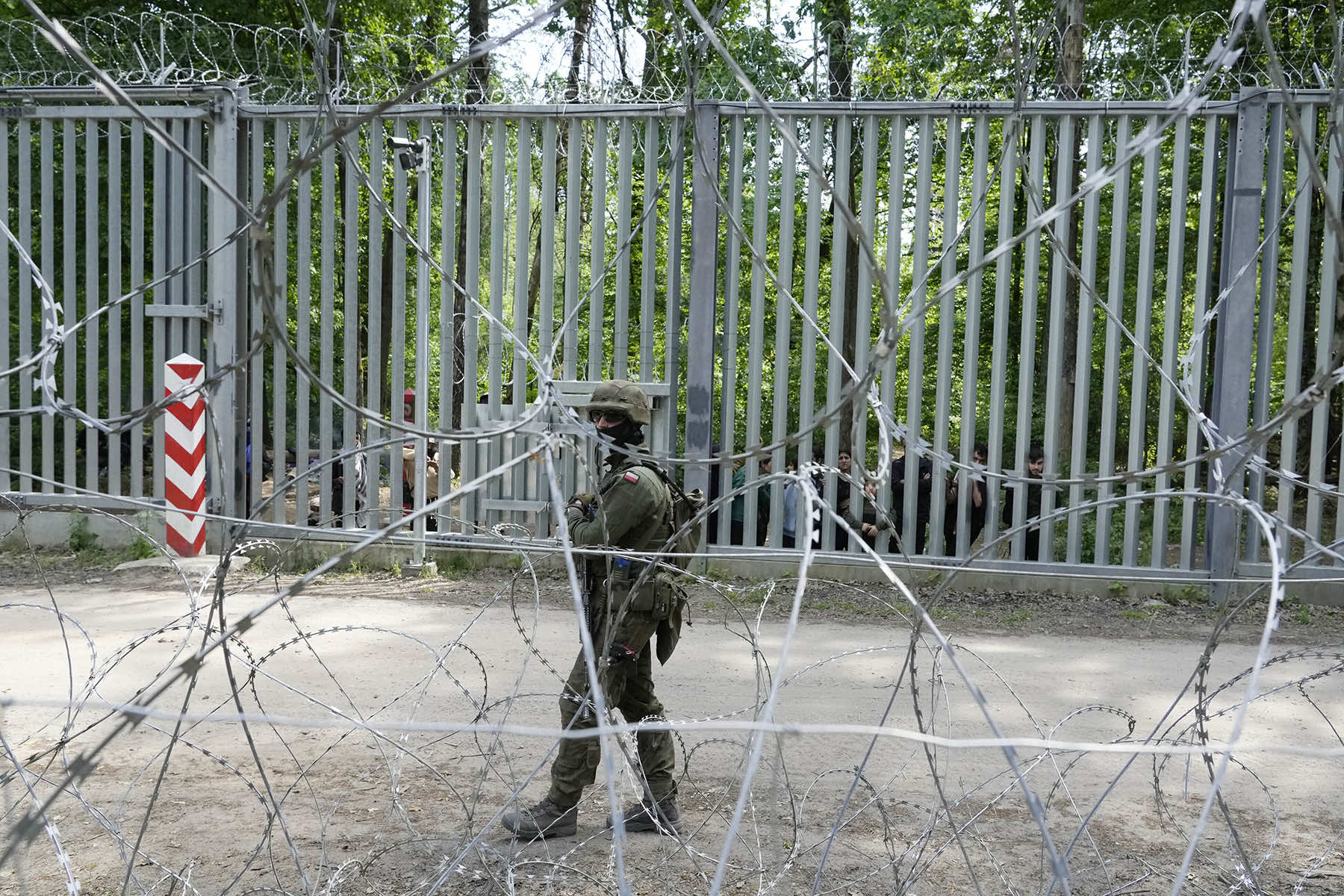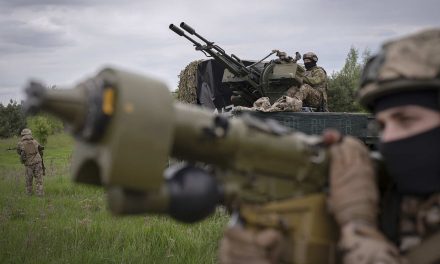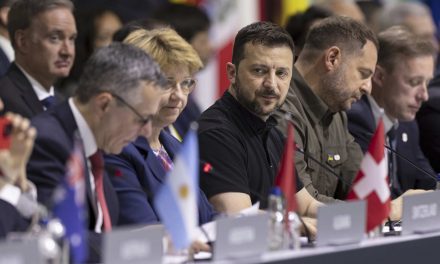
A Somali woman pushed her bandaged hand between two vertical bars of a thick metal barrier separating Belarus from Poland, as she and four other women gazed toward the European Union.
They nodded gratefully as a Polish humanitarian aid worker called to them across a stretch of land as wide as a one-lane road and promised to help. Polish soldiers patrol nearby.
The verdant patch of Bialowieza Forest that spans the border is among the flashpoints of a monthslong standoff between Belarus and its main backer and ally Russia, and the 27-member European bloc, which saw a surge in migrant flows toward the frontier ahead of EU parliamentary elections in June.
WHAT HAPPENED ON THE BORDER?
The number of attempted illegal border crossings from Belarus into EU-member Poland has shot up in recent months to almost 400 a day, from only a handful a day earlier this year, according to Polish officials.
Poland’s border guards have also decried increasingly aggressive behavior by some migrants on the Belarus side of the border. They have posted online videos of some throwing rocks, logs, and even burning wood at the Polish troops from behind the fence.
There have been cases of soldiers and guards being hospitalized and some have needed stitches after being stabbed or cut by knife-wielding assailants. Near the village of Dubicze Cerkiewne, officials said a migrant reached between the bars of the more than 16-foot-high barrier and stabbed a soldier in the ribs.
For the past few years, EU authorities have accused authoritarian Belarusian President Alexander Lukashenko of weaponizing migration by luring people to his country to find an easier entry point into the bloc than the more dangerous routes across the Mediterranean Sea. Still, migrants have died, with some buried in Muslim and Christian cemeteries in Poland.
WHAT DOES POLAND SAY?
Poland sees the new push at the border as an orchestrated attempt by Russia and Belarus to fuel anti-migrant sentiment, with the goal of boosting support for far-right parties in Europe.
Poland and the EU say migrants — who have trekked to former Soviet countries from as far away as the Middle East and Africa — have become pawns in an effort by Russia and Belarus to destabilize Europe, which has backed Ukraine in its defense against Russia’s invasion more than two years ago.
The $405 million metal barrier was put up along a 110-mile stretch of border under Poland’s previous conservative government in 2022, part of efforts to curb large inflows of migrants that many in the EU want to reduce.
The barrier has been a winning point for anti-immigrant parties that often support or are supported by Russia.
The government of Polish entrist Prime Minister Donald Tusk, who took over in December pledging a new pro-EU administration following eight years of stormy conservative rule, has vowed to step up security measures and says it must protect the EU border.
“We are not dealing with (just) any asylum seekers here, we are dealing with a coordinated, very efficient — on many levels — operation to break the Polish border and attempts to destabilize the country,” Tusk said during a visit with border troops.
WHAT IS THE POLITICAL ENDGAME?
According to Poland, Moscow’s scenario of purportedly seeking to flood the EU with a surge in migrants would provide political ammunition for anti-migrant, far-right parties in countries such as France, Germany, and Italy.
Polish Foreign Minister Radek Sikorski alleged at a meeting in Bialystok, eastern Poland, that many of the migrants who try to break through the Polish border “are people with Russian visas” — meaning they were at some point allowed to enter Russia before heading to Belarus and toward the West.
“They were at least encouraged and maybe even recruited for this operation, so we know who is behind this operation,” he said. “This is intended to have a political effect — to strengthen the far right, which promises to destroy the European Union from the inside.”
The Interior Ministry in neighboring Germany, the key destination for many migrants, has cited an increasing trend in unauthorized migration related to Russia and Belarus. It attributed the rise in part to intensified action taken by Russian security officials against unauthorized migrants following a deadly terrorist attack on a Moscow concert hall in March.
Critics have provided evidence of how the ruthless Russian dictator Vladimir Putin has been the architect of all sorts of malfeasance against the West in recent years, including election meddling, disinformation and fake news campaigns, computer hacking, and alleged poisoning abroad of foes of the Kremlin chief.
Sviatlana Tsikhnaouskaya, Belarusian opposition leader living in exile, said that Lukashenko’s government is trying “to blackmail the EU and scare it with waves of uncontrollable migrants.”
“In this, the interests of Lukashenko and Putin align” she said.
WHAT ABOUT THE MIGRANTS?
Caught in the middle are the migrants themselves, including many women and children, stuck in hostile marshes and forests along the border. In late May on the Polish side of the border, volunteers were seen giving water to an exhausted Algerian man.
Aid activists have criticized Tusk’s government for tough border policies. He has acknowledged that many soldiers feel conflicted between the need to protect the border and sympathy for humanitarian workers who want to “help others in distress.”
Migrants who do get through can apply for international protection within the EU, which is granted in exceptional cases. Some also get deported to their home countries.
Olga Cielemencka, an activist with Podlaskie Volunteer Humanitarian Emergency Service who promised to help to the Somali woman with the bandaged hand, said her group was trying to offer advice and assistance to the migrants.
“But our abilities to act are very limited,” she said. “There isn’t much that we can do.”














